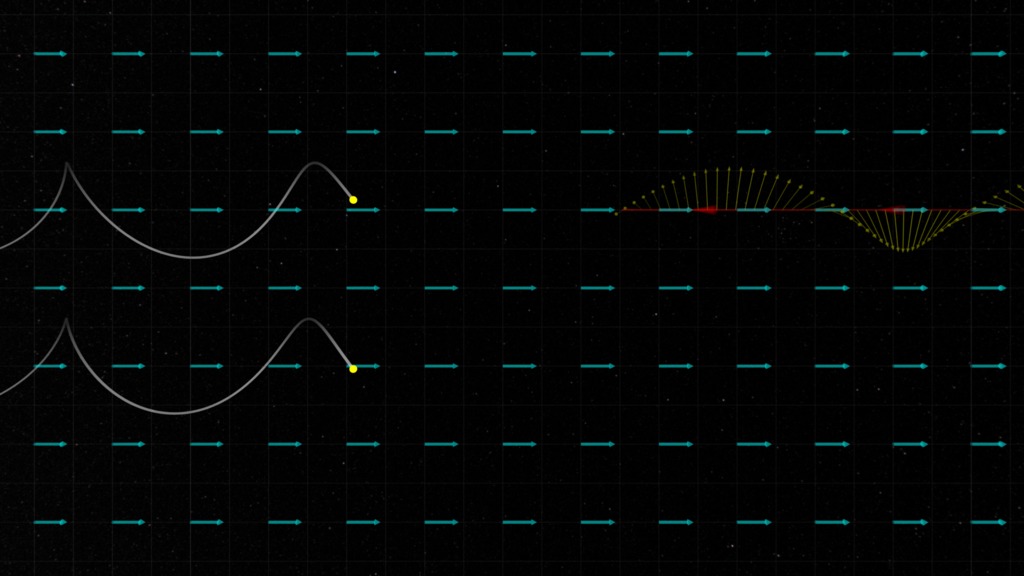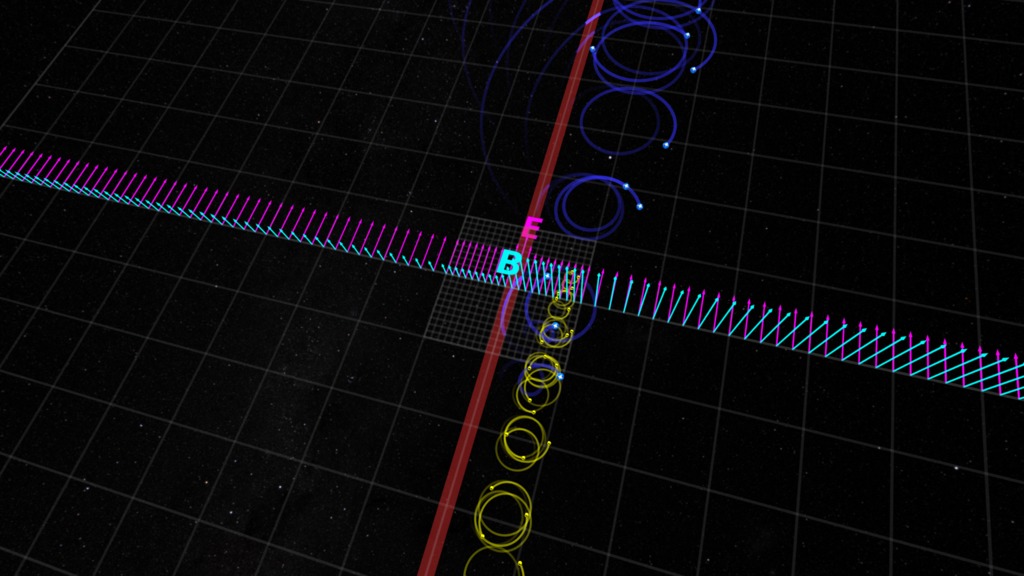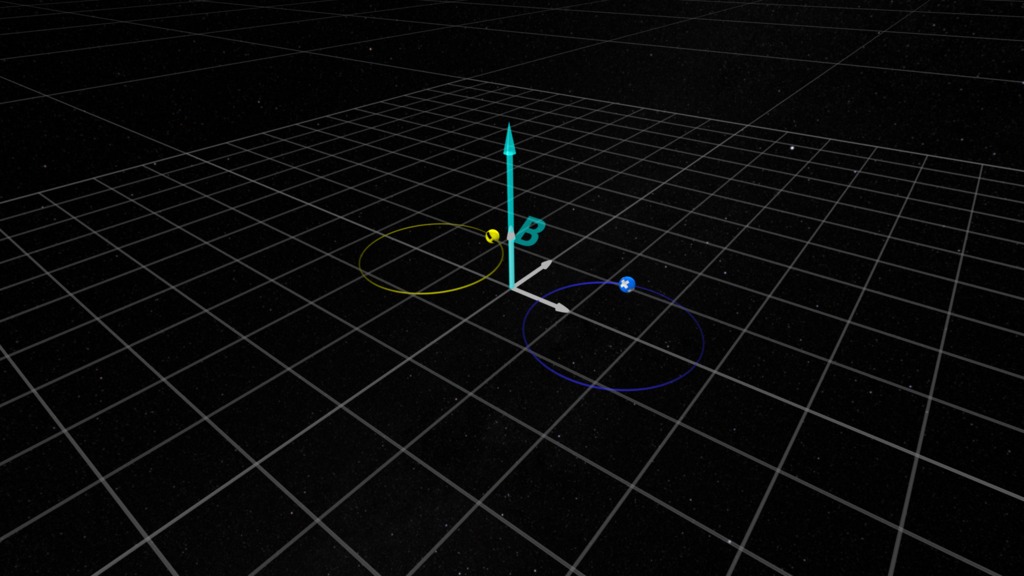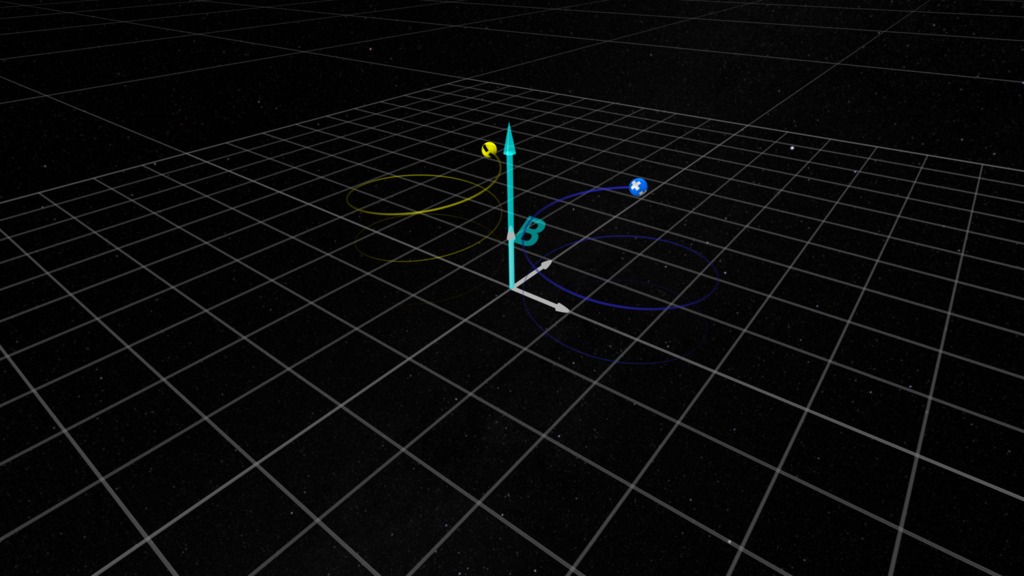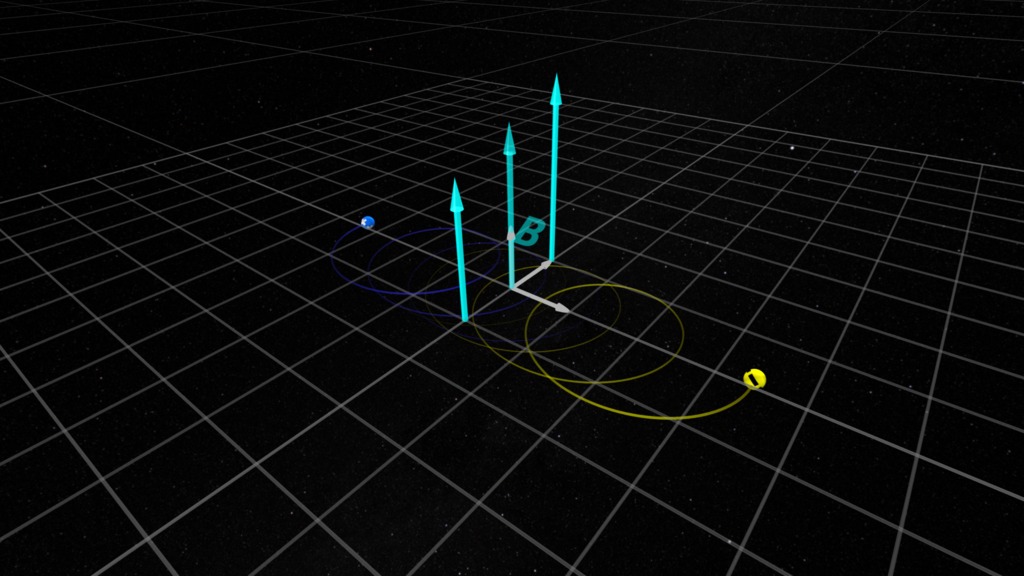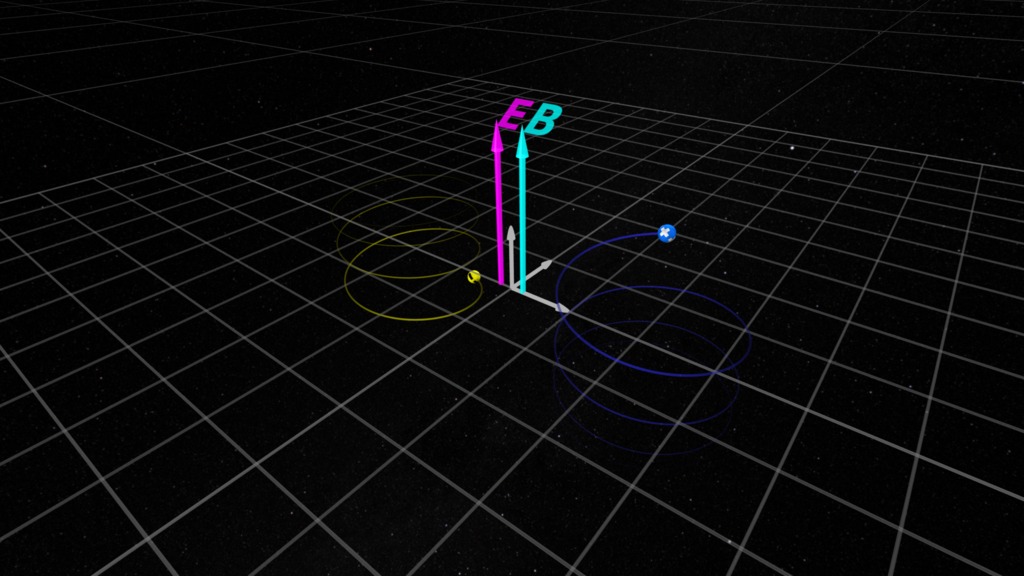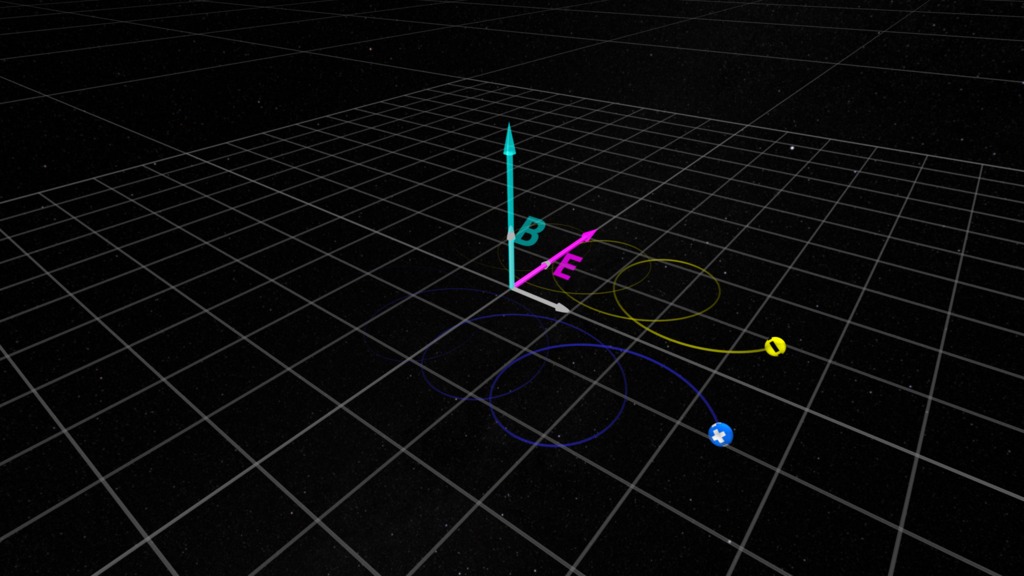Electromagnetic Waves and Polarization
Representations of electromagnetic waves of different polarizations: Right circular polarization (upper/right); Linear polarization (middle); and Left circular polarization (lower/left). Yellow arrows are the electric field, green arrows are the magnetic field.
A huge amount of our remote sensing capability depends on the light, AKA electromagnetic radiation, which we receive from distant objects. In addition to the light's wavelength and frequency (which tell us the speed of the radiation - which can be slower than 'c' in some environments), the polarization of the waves can reveal more insights on the source of the light, and the region through which it has passed.
The wave polarization is determined by the direction of the electric vector (represented by yellow arrows in these visualizations). We classify electromagnetic wave polarization as linearly polarized or circularly polarized, depending on whether the electric vector maintains a fixed direction in space (linear polarization) or rotates around the direction vector (red arrows) in the case of circular polarization. Circular polarization can be classified as left-circularly polarized or right-circularly polarized. There is also elliptical polarization which can be constructed as a combination of linear, left- and right-polarized waves.
For these visualizations, we define left- and right-circular polarization based on the 'Right-hand rule' (Wikipedia), determined by the motion of the electric vector at a fixed position along the wave (see Wikipedia: Circular Polarization). There is some ambiguity in these conventions, so use caution when applying.
Representation of a linearly polarized wave. Yellow arrows are the electric field, green arrows are the magnetic field.
Representation of a left-circularly polarized electromagnetic wave. Yellow arrows are the electric field, green arrows are the magnetic field.
Representation of a right-circularly polarized electromagnetic wave. Yellow arrows are the electric field, green arrows are the magnetic field.
Credits
Please give credit for this item to:
NASA's Scientific Visualization Studio
-
Visualizer
- Tom Bridgman (Global Science and Technology, Inc.)
-
Writer
- Mara Johnson-Groh (Wyle Information Systems)
-
Technical support
- Laurence Schuler (ADNET Systems, Inc.)
- Ian Jones (ADNET Systems, Inc.)
Release date
This page was originally published on Friday, July 7, 2017.
This page was last updated on Monday, July 15, 2024 at 12:05 AM EDT.
